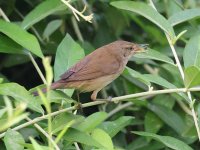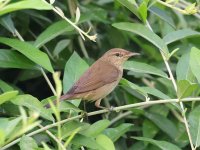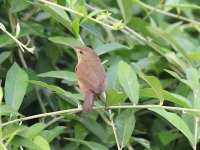Jayan Thomas
Member

Hello , Please help me identify this warbler from Kerala , India . This warbler was spotted last week along the beach bushes. It looks bigger than a Blyth's Reed Warbler. Is it a Common Reed Warbler ?
Thank You,
Jayan Thomas
Thank You,
Jayan Thomas








